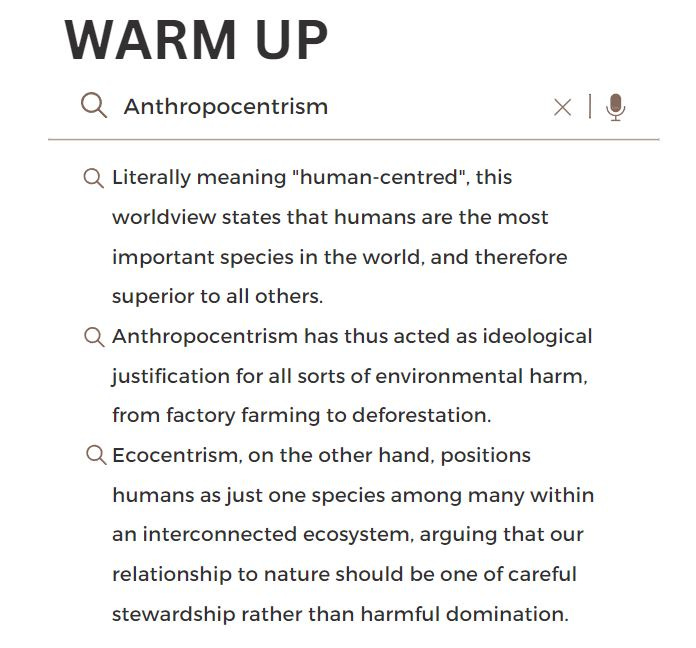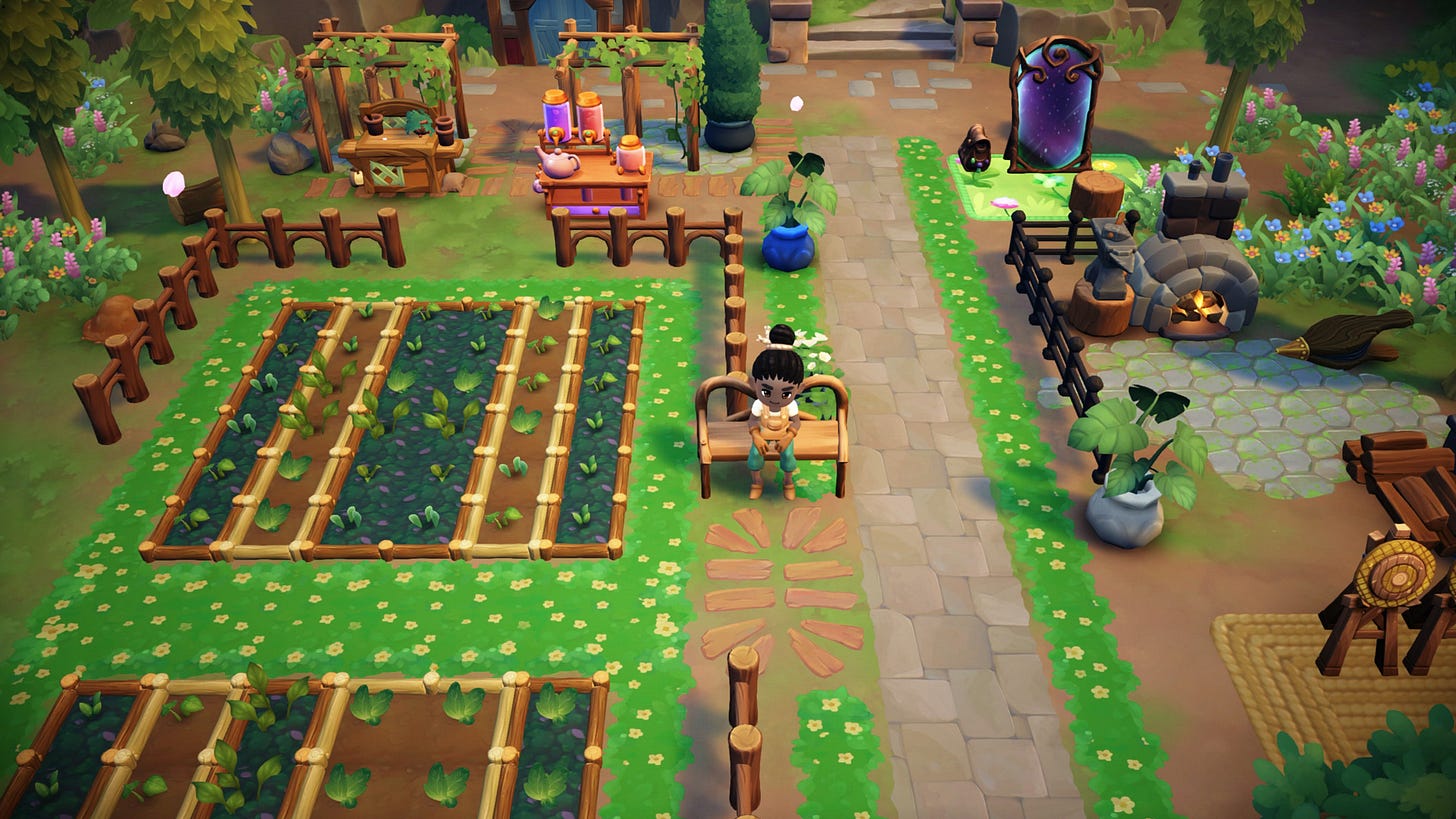Death to the cosy farming simulator
Your latest digest of video game and climate change news from the past two weeks.
Welcome to the latest edition of Play Anthropocene!
Today is Tuesday, June 27, and we’re covering the latest developments in the world of video games and climate change. Happy reading!
Avatar: Frontiers of Pandora steers Ubisoft’s Far Cry template away from its anthropocentric roots
For the most part, Avatar: Frontiers of Pandora looks all set to follow the familiar, open-world shooter template first established by the Far Cry series decades ago, which is no surprise given that Ubisoft is responsible for the development of both.
But there’s one problem: part of that template typically involves encouraging the player to conquer the open world by killing and harvesting the local fauna and flora for their own gain. In the world of Pandora, and the mind of James Cameron, that would very much make you the bad guy.
That’s because the Avatar movies are explicitly environmentalist parables, illustrating in particular the way colonial forces destroy and exploit the natural habitat of their seized territory for profit, while simultaneously subjugating the local indigenous communities who have cared for that same habitat for generations.
So, how is developer Ubisoft Massive resolving this tension between the genre’s central power fantasy, and the need to redress the value systems running beneath it in Frontiers of Pandora? The game’s creative director Magnus Jansén recently spoke to Eurogamer to explain the ways in which the studio is steering its Avatar game towards a more “sustainable” gameplay loop.
According to Jansén, players will still be able to "harvest plants and hunt animals for food, for sustenance, to regenerate your health”, but the game rewards those who put more consideration into how these resources are harvested. “As in real life, some things grow better somewhere,” adds Jansén, telling Eurogamer that “some fruits are sweeter depending on where you pick them, or the conditions in which they grow.”
These feedback loops are all part of a wider effort to encourage the player to become more “in tune” with Pandora in the game; understanding their environment as a living, interconnected system which they sit within, rather than just a territory to be conquered. This worldview is one that sits more in line with Ecocentrism, which celebrates the value of all living things and natural phenomena irrespective of their utility to humankind.
Traditional human models of economics and progress tend to portray the natural world in terms of their resource value, and Far Cry games have naturally followed that assumption, but Jansén’s comments suggests Frontiers of Pandora will instead ask players to consider their responsibility as stewards of the world they inhabit. Of course, this is still a big budget Ubisoft first-person shooter with commercial expectations, so I’m not entirely convinced about the game’s subversiveness just yet. But it’s nevertheless encouraging to see Ubisoft apply some self-reflexive critical thinking to the subtext running underneath some of its most popular titles, and start to explore healthier portrayals of our relationship with the natural world.
Fortnite brings down your energy usage when you’re not looking
“The intended audience for this paper is software engineers and technical artists”, reads Epic’s new tome on reducing Fortnite’s power consumption across PC and console. Well, how about catastrophically niche newsletters? In all seriousness, this latest whitepaper from Epic Games’ programming team might seem a little inside baseball at first glance, but there’s some genuinely interesting stuff in here for the outside observer.
For starters, Epic have found some pretty nifty ways to boost Fortnite’s energy-efficiency with little development cost on their end, starting with what it calls “inactivity-based energy saving”. In short, the studio decided to halve Fortnite’s framerate and reduce its resolution by 25% after 30 seconds of player inactivity in the main menu, and in doing so, brought the game’s energy demands down significantly.
“Many of the energy savings described in this paper can be achieved without your team having to write a single line of code—so there are big wins to be had with minimal time and effort required on your part.”
Ben Woodhouse Lead Console Programmer, Epic Games
Of course, it would be much better if players just turned off their consoles after extended periods of inactivity, and publishers like Epic could do more to communicate good practice around that both in-game and beyond, but this is a smart enough half-measure for the time being.
It’s not too dissimilar, in fact, to the tricks that 343 Industries pulled off in Halo Infinite, reducing the resolution every time the player hit the pause menu in order to bring down the game’s energy costs. As such, this continues the pattern of sustainability-focused development that aims to achieve energy-efficiency without ever compromising fidelity to the point where the player picks up on it. A sacred cow which - as mentioned before on Play Anthropocene - I hope the industry learns to become comfortable with slaughtering sooner rather than later.
Nevertheless, the net results of the changes listed in Epic’s whitepaper allowed Fortnite to save 200 MWh per day of energy across its player base, equivalent to “14 wind turbines running for a year”. It’s also worth noting that Epic explicitly thanks Xbox for its support in developing these strategies; illustrating the way in which Microsoft’s real-time energy tracking tools are already being utilised in the ongoing efforts to shrink the industry’s carbon footprint. A small victory royale for both sides, then.
Why is cosiness the only thing video games can associate with farming?
There’s long been a running joke about the seemingly endless treadmill of “cosy” farming simulators continuing to overwhelm the Nintendo Switch’s library and, sure enough, at last week’s Direct showcase, we got an announcement that yet another one was on the way, this time in the form of Fae Farm.
Listen, I get it. While they’ve never really been my thing, I do understand the meditative, remedial charms of games that sit within this genre, offering gentle opportunities for progression and self-expression within aesthetically serene play spaces. Nintendo knows well enough that there’s a continued appetite for this genre, too; Animal Crossing: New Horizons has gone on to become the best-selling game of all time in Japan, so it’s little wonder that various impersonators have continued to show up at almost every Direct in the meantime.
But ask any farmer to describe their job, and I can almost guarantee you that cosiness isn’t the first word that comes to mind. In fact, farming is infamous for being an unforgivingly challenging vocation fraught with all kinds of risk (financial, physical, psychological, or otherwise), and even more so in today’s warming world, where harsher and more unpredictable climates can expose crops, and livelihoods, to much greater threats.
Of course, there is something to be said about the health benefits of spending your days surrounded by nature, and the way in which horticulture can restore your relationship to the natural world, but in the age of industrialised farming, the disconnect between a farmer and their work is wider than ever before. In order to deal with volatile markets, growing demand, and inadequate governance, farmers are left with no choice but to adopt increasingly intensive agricultural methods, from carpet bombing crops with pesticides and fertilisers, to mechanising entire sectors within their tradecraft.
The long term impacts of this approach can be devastating, ruining soil and water health, collapsing entire ecosystems, and making the land more vulnerable to flooding, and even then, that’s before you throw in the increased likelihood of drought and crop failure. When this kind of exhausting and turbulent occupation is so intrinsically connected to someone’s very way of life, then, it’s not hard to imagine the mental toll that can have on a person; in India, farmers presently make up for 15 percent of the total number of suicides.
Which is why, whenever I see the gaming industry associate farming with this twee, treacly cosiness time and time again, I can’t help but cringe. Sure, there the odd titles here and there that adopt a more realistic portrayal of the vocation (the official Farming Simulator series, for one thing), but none that I’m aware of have used their creative tools to explore what it really means to be a farmer in the 21st century. Nor have I seen any farming games that promote or raise awareness around alternative agricultural methods such as rewilding or agroecology either, even as the need for such sustainable practices are more urgent than ever.
Don’t get me wrong; there’s nothing inherently bad about a cosy farming simulator game on its own. But there ought to be a healthy balance here; one where the overwhelming number of these titles are counterweighted against the more grounded alternatives that tap into some of the tough realities of contemporary farming. Let me see one of those in a Nintendo Direct, and then you’ll have my interest.
Enjoyed this newsletter? Subscribe or spread the word about Play Anthropocene to others who might be interested, and if you have any feedback or questions, feel free to get in touch with me at PlayAnthropocene@gmail.com
Find me on Twitter: @alexavard95








